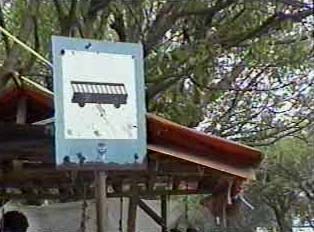LangMedia
Indonesian in Indonesia
Local Transportation

Local transportation options abound. Jakarta and other big cities have local bus systems with set routes and stops, but not set schedules. Passengers simply wait for the next bus to arrive. Buses always have both a driver and a conductor. You pay the conductor as you get off the bus. Bus services run late into the evening.
A more common form of local transportation is the "angkot" (short for "angkutan kota" which means "city transportation"). Angkots are minivans that hold around 15 people and are always painted green. They travel on fixed routes for a fixed price. Passengers can call out to the driver to stop anywhere along the route. The typical call is "kiri" which means "left" indicating the driver is to pull to the left of the road and let the passenger off (Indonesians drive on the left side of the road). Potential passengers can flag down the angkot as it travels its route. A sign on the front if the vehicle indicates its point of origin and destination. Passengers pay the conductor at the end of the ride after they get out of the vehicle.
Other forms of local tranportation which are especially good for short distances and small, crowded side streets, are a "becak," an "ojeg," and a "bajay." A becak is small non-motorized cart which the driver pedals. A becak is a little more expensive than an angkot, but is not confined to a set route. A typical becak will hold 2 adults and 2-3 children on laps if necessary. You can use a hand signal to flag down an empty becak on the street. Bargain for the price and pay the driver on arrival. Tips are not expected.
An ojeg is a motorcycle or scooter-type vehicle. It carries a single passenger who rides behind the driver. Bargain for the price. The driver will put a passenger's bags in front by his handlebars. An ojeg costs about the same as a becak. Found mostly in Jakarta is a "bajay." A bajay is a three-wheeled motorized cart which holds two to three passengers. Ask the driver the cost and bargain if the named price is too high. Some smaller villages will have carts drawn by horses. These carts usually hold up to six passengers and follow a set route. It is best to board a cart at the main cart station, although it is also possible to flag a cart down along the route, they are often already full. Carts will stop anywhere along the route.
Videos
-
"A Becak Ride"Transcript document:
